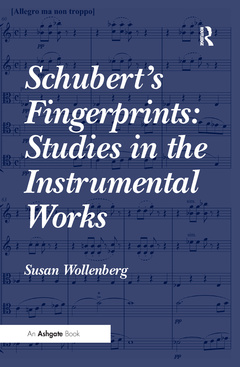Schubert's Fingerprints: Studies in the Instrumental Works
Auteur : Wollenberg Susan

Date de parution : 09-2016
15.6x23.4 cm
Thème de Schubert's Fingerprints: Studies in the Instrumental Works :
Mots-clés :
Theme Ii; string; String Quintet; quintet; Sonata Form; sonata; Schubert’s Instrumental Music; form; Piano Sonata; schuberts; Schubert’s Transitions; music; Schubert’s Music; piano; Schubert’s Chamber Music; trio; Major String Quintet; slow; Schubert’s Sonata Form; movement; Tonic Minor; Schubert Fingerprint; Chopin; Chromatic Fourth; Piano Trio; Major Quartet; Minor Quartet; Augmented Sixth Chord; Lachen Und Weinen; Slow Movement Theme; Heavenly Length; Ernst Hilmar; Neapolitan Minor; Beethoven’s Instrumental Music; Da War



